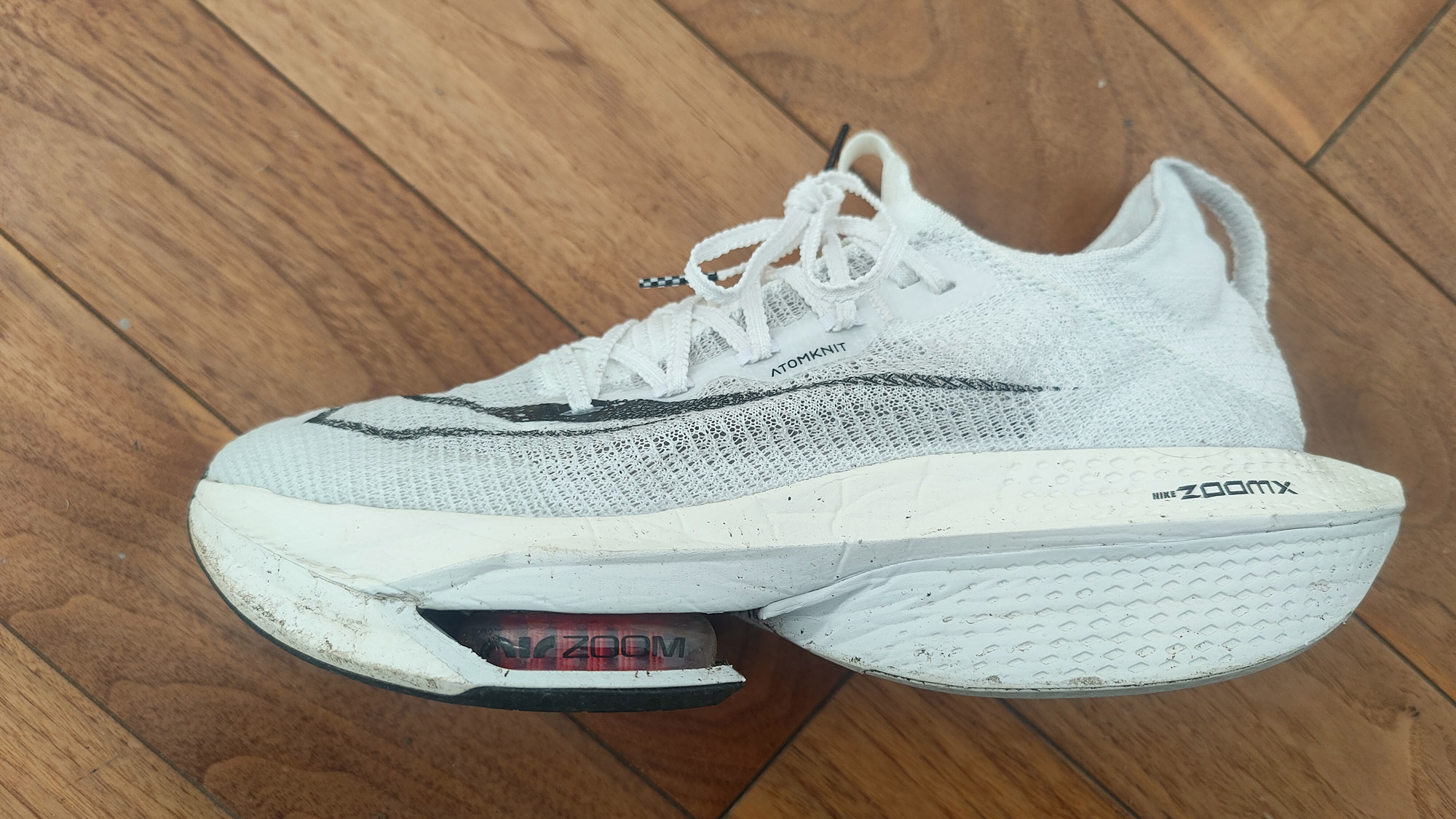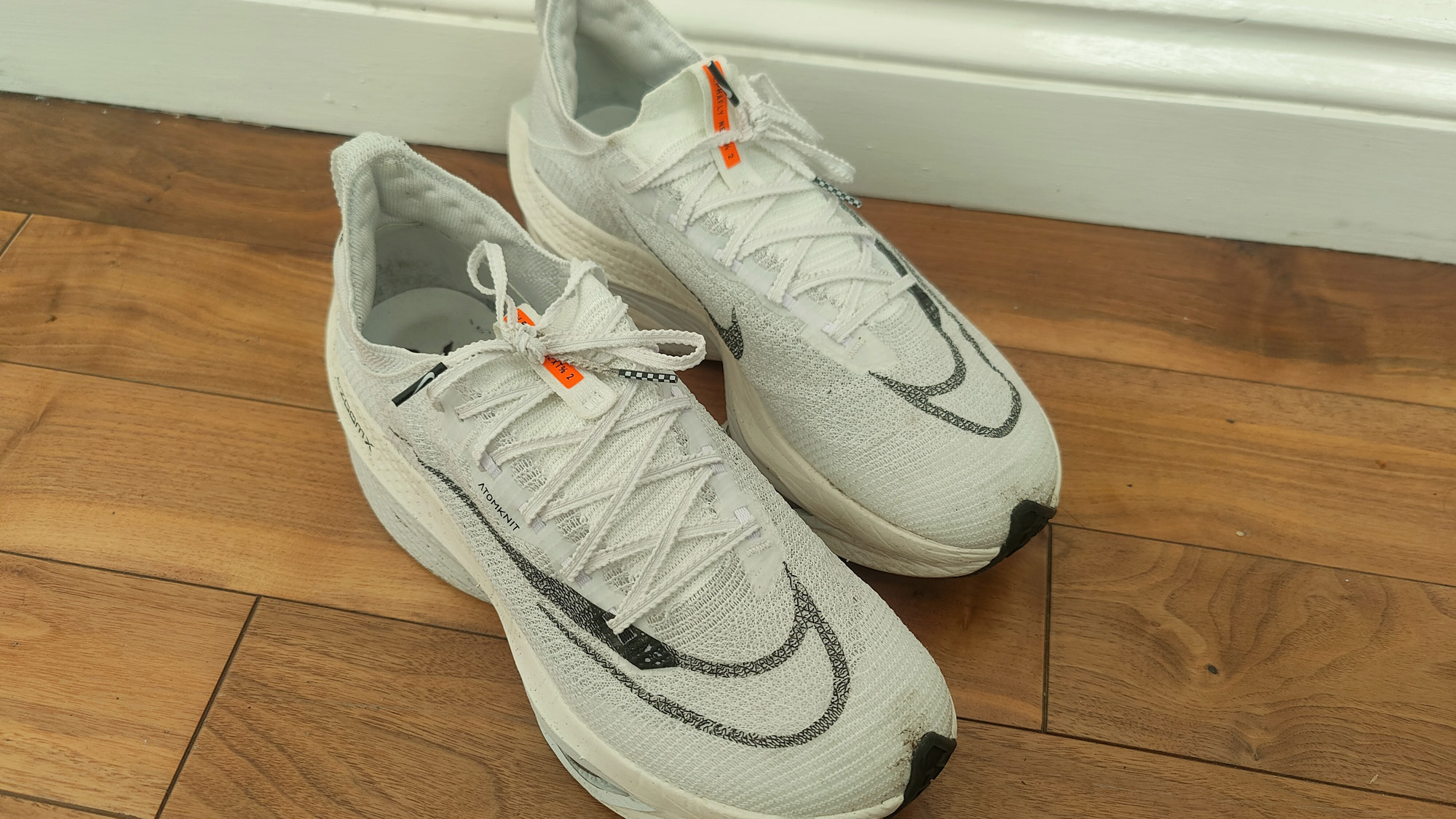I tried the infamous record-breaking marathon shoes, but are they worth the price?
The Nike Air Zoom Alphafly NEXT% 2 will give me the edge on race day

A few months ago, I did something very silly and signed up for my first marathon. Naturally, as a technology journalist, the first thing I did (once I realized there was only five months to go and I really needed to start planning) was to search for the right equipment for the job.
I had my pick from the best running watches, like the Apple Watch Ultra or one of the best watches from Garmin. I was also covered in the heart rate monitor department, with the impressive Polar H10. The only thing I had left was to choose which shoe I’d run in, so naturally, I opted for the best road running shoe I could find.
That ended up being the Nike Air Zoom Alphafly NEXT% 2. These shoes are notorious for being record-breakers, as Kenyan professional runner Eliud Kipchoge, widely regarded as the greatest marathon runner ever, used them to smash his PB at the 2022 Berlin Marathon, with a total time of 2:01:09. Although I'm not expecting to win the Brighton Marathon when I take it on in April 2023, I thought it couldn’t hurt to try these shoes out to see if I could steal a fraction of Kipchoge’s power.
The NEXT% 2’s are built for success. The sole is comprised of Nike’s ZoomX foam, which surrounds the Air Zoom’s trademark air bubble, and a carbon plate that springs back into shape after your foot leaves the ground, creating a sensation of propulsion — especially if you’re naturally a heel striker.
The upper is comprised of Nike’s stretchy AtomKnit, which you have to pull open before you slide your foot into the shoe. Despite its size, the UK size 9 test pair I had weighed a rather average 249g, a testament to how meticulously engineered the shoe is. So when the package arrived, I couldn’t wait to lace up the shoes and took them for a spin.

My first four-mile run in the NEXT% 2 took me on a very hilly course, which included a few extremely demanding upward gradients. The shoes took a bit of getting used to, and I spent the first mile or so figuring out how to make slight adjustments to my stride, placing a bit of extra force and rocking more to allow the responsive foam to do its work. The springiness of the air pocket and carbon-fiber plating helped most with energy conservation: at the apex of the course’s biggest hill, I was gasping, having gritted my teeth and pushed through the climb.
Ordinarily, I would have slowed to a walk and caught my breath for 30 seconds, but I decided to put the shoes to the test and instead slowed my pace only slightly to cruise, allowing the shoe’s responsive spring to do its work. At that “marathon pace”, the NEXT% 2 shoes responded the best, allowing me to get my breath back by putting in less work, even though I was traveling faster than my usual recovery pace might have been.
These things are amazing! I thought once I had finally adjusted my stride to work with them. It’s like I’m cheating!
I’m not the first person to have thought so, apparently, as the original NEXT% sneaker came under fire when first debuting in 2020 for being somewhat over-engineered. After close inspection by race authorities, the shoe was deemed acceptable for professionals to use without constituting an unfair advantage, but for someone like me who usually runs in more minimalist shoes like the Saucony Kinvara range, with its 4mm drop, the NEXT% 2’s bouncy inch-thick soles were a revelation.
I’ll most likely be using these shoes at the starting line come race day. However, at a hefty $275 in the US, £265 in the UK and AU$375 in Australia, I can’t recommend them to anyone but the most serious race runners. I normally run for fitness (and because it means I stop looking at screens for at least an hour twice a week), and there’s no way I would need the extra juice inherent in these shoes if I wasn’t training for my first marathon.
If you’re someone who’s got a calendar largely revolving around which races you’ve entered in 2023, dropping the money on these sneakers might be the best purchase you make all year. However, for more casual road runners, save yourself half the price and buy a pair of decent quality shoes that don’t cost the earth.
For habitual trail runners, you’ll also want to look elsewhere: the NEXT% 2s are beautiful, but they’re designed to offer support on flat surfaces rather than grip on muddy trails. For more info, check out our guide on how to buy the right running shoes.
Get daily insight, inspiration and deals in your inbox
Sign up for breaking news, reviews, opinion, top tech deals, and more.

Matt is TechRadar's expert on all things fitness, wellness and wearable tech.
A former staffer at Men's Health, he holds a Master's Degree in journalism from Cardiff and has written for brands like Runner's World, Women's Health, Men's Fitness, LiveScience and Fit&Well on everything fitness tech, exercise, nutrition and mental wellbeing.
Matt's a keen runner, ex-kickboxer, not averse to the odd yoga flow, and insists everyone should stretch every morning. When he’s not training or writing about health and fitness, he can be found reading doorstop-thick fantasy books with lots of fictional maps in them.